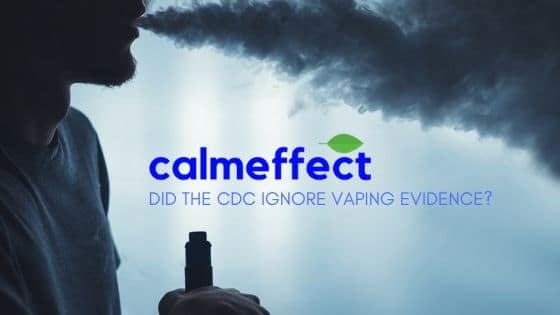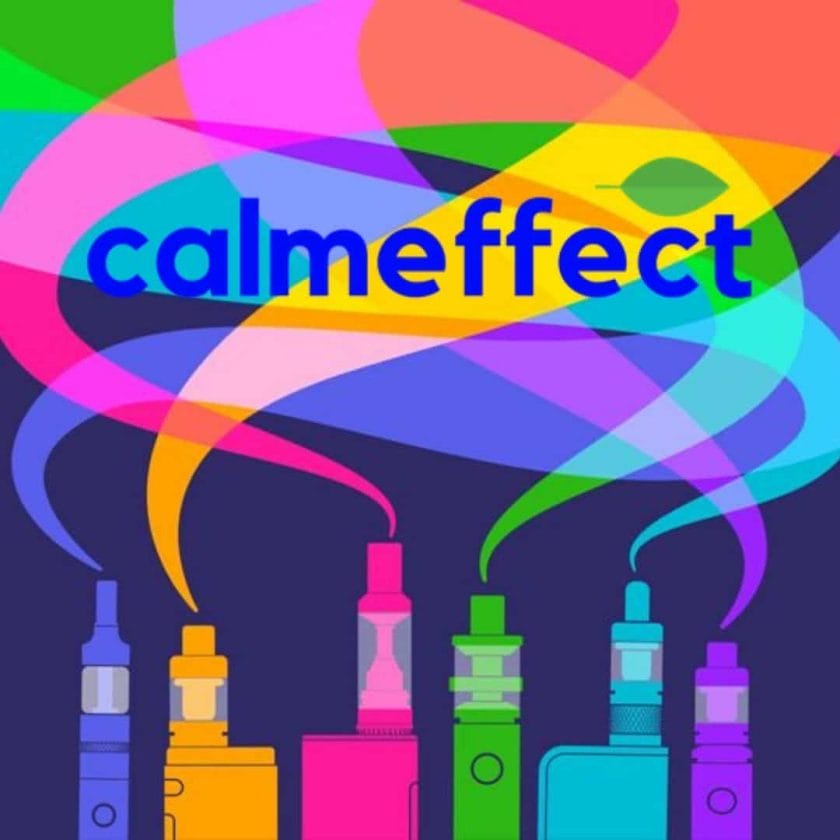Did the CDC Ignore Vaping Evidence?

2019 was the year of the vaping health crisis and it seems 2020 will be a year of reckoning. The first question that must be asked is this: Why did American public health officials fail so spectacularly?
The VAPI/EVALI emergency represents one of the greatest derelictions of duty on the part of American public health leaders in many years.
Did the CDC Ignore Vaping Evidence? – Evidence Existed in Late Summer 2019
On August 23, officials at the federal Centers for Disease Control and Prevention (CDC) announced that they had identified 193 potential cases of a new and mysterious lung illness linked to vaping across 22 states. One adult in Illinois died after being hospitalized for the condition, CDC leaders said.
Did the CDC Ignore Vaping Evidence? – Public health officials consciously ignored market-based information while the death toll mounted. One week later Leafly published the first story exposing the frightening rise of a new street-market cutting agent, vitamin E oil (tocopheryl acetate). David Downs, their California bureau chief, drew upon his extensive contacts and years of experience covering the state’s cannabis industry to ask a basic question: People have been vaping cannabis oil and nicotine for years without suffocating to death—what changed?
Hey, look into this vitamin E oil – Did the CDC Ignore Vaping Evidence?The answer, Downs found, was the introduction of vitamin E oil specifically into illicit THC vape cartridges. The oil wasn’t in legal cartridges because state regulators require manufacturers to label every cartridge with its lab-verified THC content. A legal cart heavily cut with vitamin E oil would test out at 25% THC or lower—a mark of shame that consumers would shun. (Most legal cannabis cartridges contain 70% to 90% THC.)
Nicotine carts weren’t cut with the stuff because it makes no economic sense to do so. Nicotine extract is cheap; THC extract is expensive. THC vape consumers in prohibition states had no lab-verified label on their carts, so they bought into a myth: The thicker the oil, the higher the THC content. Vitamin E oil took over the street market because it “thickened” the cart while actually reducing the THC content—and the cost to the manufacturer.
Did the CDC Ignore Vaping Evidence? Public health officials, and especially leaders at the federal Centers for Disease Control, consciously ignored all of this market-based information.
CDC Focused on Patients, Ignored the Supply Chain
Instead, they insisted on solving the VAPI mystery by relying on honest responses from patients affected by the tainted cartridges. For months, CDC officials told the public it was impossible to know what kind of vapes were killing people.
In fact, public health leaders were so desperate to cast blame on nicotine vape devices (which they insisted on calling “e-cigarettes,” a term absolutely nobody who vapes ever uses) that they changed their original term, VAPI (Vaping Associated Pulmonary Injury), to the more cumbersome EVALI (E-cigarette or Vaping Product Use-Associated Lung Injury) in order to put the focus on e-cigarettes.
Research has found that a certain percentage of patients will bend the truth to avoid exposure or embarrassment.The data told a different story. Nearly all of the VAPI cases emerged from patients who vaped illicit THC cartridges. A stubborn percentage of patients insisted they had only vaped legal nicotine products—around 10 to 15%.
In a late October report on Utah EVALI victims, 92% of the 53 patients interviewed said they’d vaped THC in the three months prior to their lung injury. Cannabis is outlawed in Utah, so their vape cartridges were obtained from the illegal market. After testing, 89% of them were found to contain vitamin E oil. Similar percentages attended other patient populations.
What was happening was clear to anyone familiar with human psychology and the history of cannabis. In a certain number of VAPI cases, shamed and embarrassed patients probably lied to their doctors.
In 2015, public health researcher Dana Eser Hunt looked into the reliability of self-reported responses “when the questions involve reporting behaviors which threaten the respondent with exposure, embarrassment or both.” Hunt’s findings were critically pertinent to the VAPI crisis. In one study of adults tested for cannabis consumption, only 84% were willing to admit to past use—even after they were presented with a positive drug test result that showed otherwise.
Federal and state health officials seemed to treat VAPI as if it were a judgment-neutral outbreak, like the Legionnaires’ Disease mystery of the 1970s. But it wasn’t. It involved a highly stigmatized and illegal activity: consuming cannabis.
As CDC officials continued to cling to the fiction of nicotine-cause VAPI, state leaders panicked.In late September, Massachusetts Gov. Charlie Baker outlawed all vaping products. Washington Gov. Jay Inslee, who’d been crusading for years to kill the nicotine vape industry, spotted a political opportunity and pounced. He banned flavored vapes and blasted vaping companies. “Look, when you addict a 12-year-old kid to nicotine, you’re just wrong,” he roared. Never mind that Juuling seventh-graders, concerning as they are, were not suffocating from vitamin E poisoning.
Saving Thousands of Lives Every Year
Research out of the UK has consistently shown nicotine vaping to be one of the most successful harm reduction tools of modern times. Public Health England has found that vaping is 95% safer than smoking cigarettes. A 2017 study in the Annals of Internal Medicine found that adult nicotine vaping was associated with “substantially reduced levels of measured carcinogens and toxins relative to smoking only combustible cigarettes.” Roughly 480,000 Americans are killed by tobacco smoking every year. If the cancer risk dropped 95%, that would mean about 456,000 Americans might not die in a future year.
BMJ considers the rise of nicotine vaping as a substitute for tobacco smoking to be one of the decade’s great public health victories.Nicotine vaping saves lives—thousands of them, possibly millions. Earlier this month BMJ, one of the world’s most respected medical journals, ran a summation of wins and losses for British public health in the 2010s. The rise of nicotine vaping as a substitute for tobacco smoking was ranked as one of the decade’s great public health victories.
“Credit should go to Public Health England for championing electronic cigarettes,” wrote BMJ’s Nigel Hawkes, “which has given tobacco cessation a boost at no cost to the public purse.” Hawkes noted that “if somebody could come up with a similar technological fix for obesity they would be the hero of the 2020s.”
CDC’s Conclusion: Too Little, Too Late
Finally, in late December, CDC officials admitted what the data had shown for months: Street-market THC vape carts cut with vitamin E oil were the cause of the VAPI outbreak. The Washington Post reported:
With the latest data, “we are of the belief that vitamin E acetate has caused” the vaping-related lung illnesses “in the vast majority of patients,” [CDC principal deputy director Anne] Schuchat said. Although other studies are ongoing to understand the specific mechanisms of the harm to lungs, “we don’t have to hold our breath to go deeper.”
By then the damage had been done. The narrative had already been set in the minds of millions.
In news stories, there had been no distinction between legal and illegal products. Or mention of the fact that, as David Downs reported, legal cannabis vape cartridges have been found to be 1,000% safer than street-market vapes. Nothing was said about the millions of adults whose lives will be saved by switching from smoking to vaping.
This is the real and tragic legacy of the VAPI crisis of 2019. As we sail into 2020, it is time to reckon with the damage done and to redouble the fight to reduce harm and save lives. The fight for cannabis legalization isn’t just about changing laws. It’s about repairing past harms, fighting ignorance and stigma, implementing sensible policies, and improving the health, wellness, and happiness of every single individual.
READ ORIGINAL ARTICLE HERE – Did the CDC Ignore Vaping Evidence?
CHECK OUT OUR OTHER INFORMATIVE BLOG ARTICLES HERE
Check out this helpful video on different ways to consume medical marijuana.
Vaping – Is it Safe???
Watch our helpful video on the subject!

As reports began to appear of a potential linkage between lung injuries and vaping products, NCIA’s Policy Council established a Safe Vaping Task Force. The Task Force’s efforts transitioned to a new phase in late November 2019 when health experts confirmed that the proximate cause of many of the injuries and deaths were attributable to vitamin E acetate used as a thinning agent in illicit market products. Today, it appears that public health experts have concluded that additives from the illicit market appear to be the primary cause of the lung injury crisis. Ultimately, one thing is clear: we must stop the flow of unregulated and untested products to consumers from the illicit market. READ MORE
Trust CalmEffect to help you find qualified and reputable doctors and dispensaries.